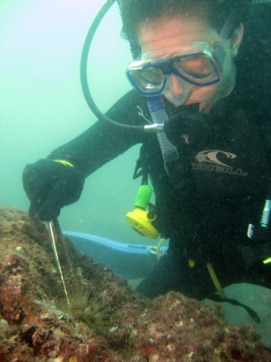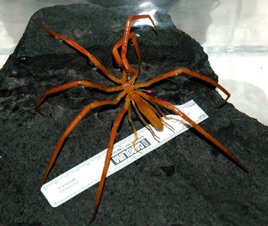Despite the fundamental importance of larvae in the life cycles of organisms, the factors controlling larval success or failure in the ocean are one of the great ‘black boxes’ of marine biology. The majority of marine animals have a larval stage that is free-living, long-lived, and very different from the juvenile or adult. We study larval evolution, the physiological and morphological adaptations of larvae and juveniles to different environmental conditions, and how environment affects survival, dispersal, and recruitment into adult populations.
In collaboration with Peter Marko at the University of Hawai‘i, we are investigating the ecological and evolutionary factors that affect egg and offspring size using species such as the shingle urchin Colobocentrotus atratus and the polychaete worm Hydroides elegans. We also collaborate with Art Woods at the University of Montana and Nicole Phillips at the Victoria University of Wellington to understand how size, temperature, and oxygen delivery interact to shape the evolution of size and structure in invertebrate egg masses. Lab members are investigating questions as diverse as zonation and thermal ecology in the Hawaiian intertidal, the thermal tolerance and acclimatization capacity of sea urchin, polychaete, and coral larvae, the effects of bleaching on reproductive output in corals, and the relationships between egg size, egg energy, and environment in sea urchins - the last in collaboration with Justin McAlister at the College of the Holy Cross.
While most of the lab’s work is on eggs, embryos, and larvae, we are not above working with adults if by doing so we can work in exciting places and answer fundamental questions in marine biology! Recently we have been collaborating with Art Woods and Bret Tobalske at the University of Montana to investigate the physiology and functional morphology of pycnogonids, aka sea spiders. This extraordinary group reaches very large sizes in the Antarctic and we are examining the implications of water temperature and oxygen availability for the evolution of body size.
Human activities are triggering a rapid and unprecedented rate of environmental change; for marine species the impact of climate change and environmental degradation is very poorly understood, particularly from the perspective of development and physiology. Our work focuses on understanding organismal responses to the environment in an ecological, physiological, and evolutionary context to increase understanding of how species and populations will be affected by ongoing changes to the planet.



